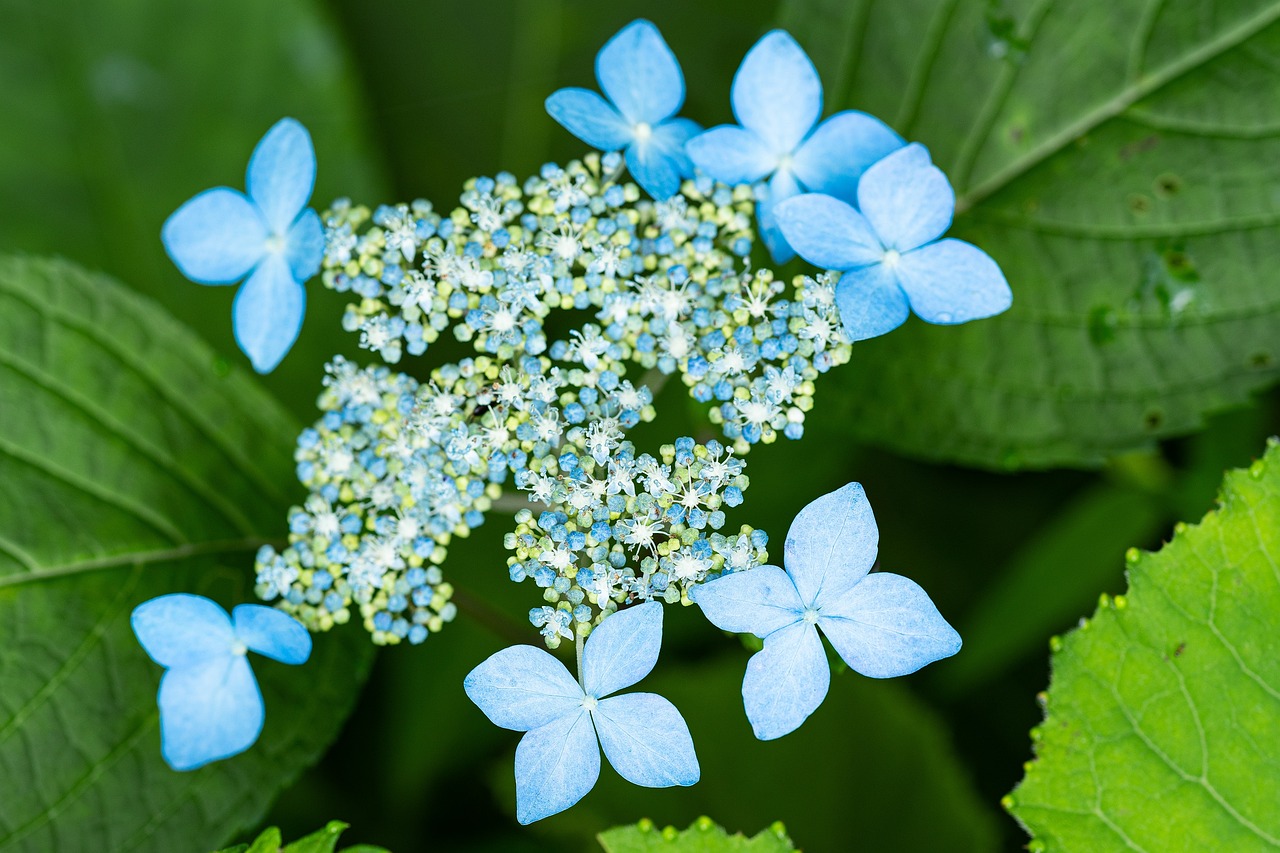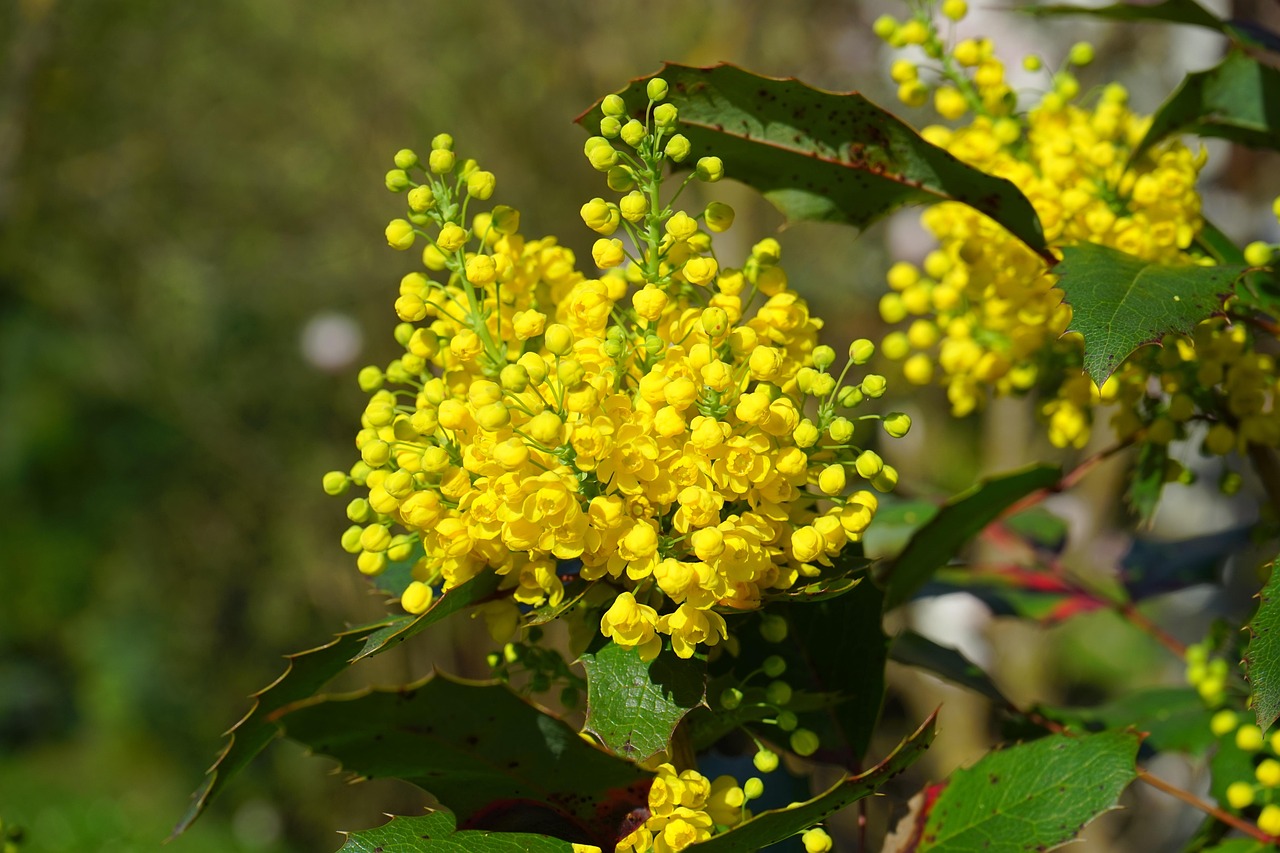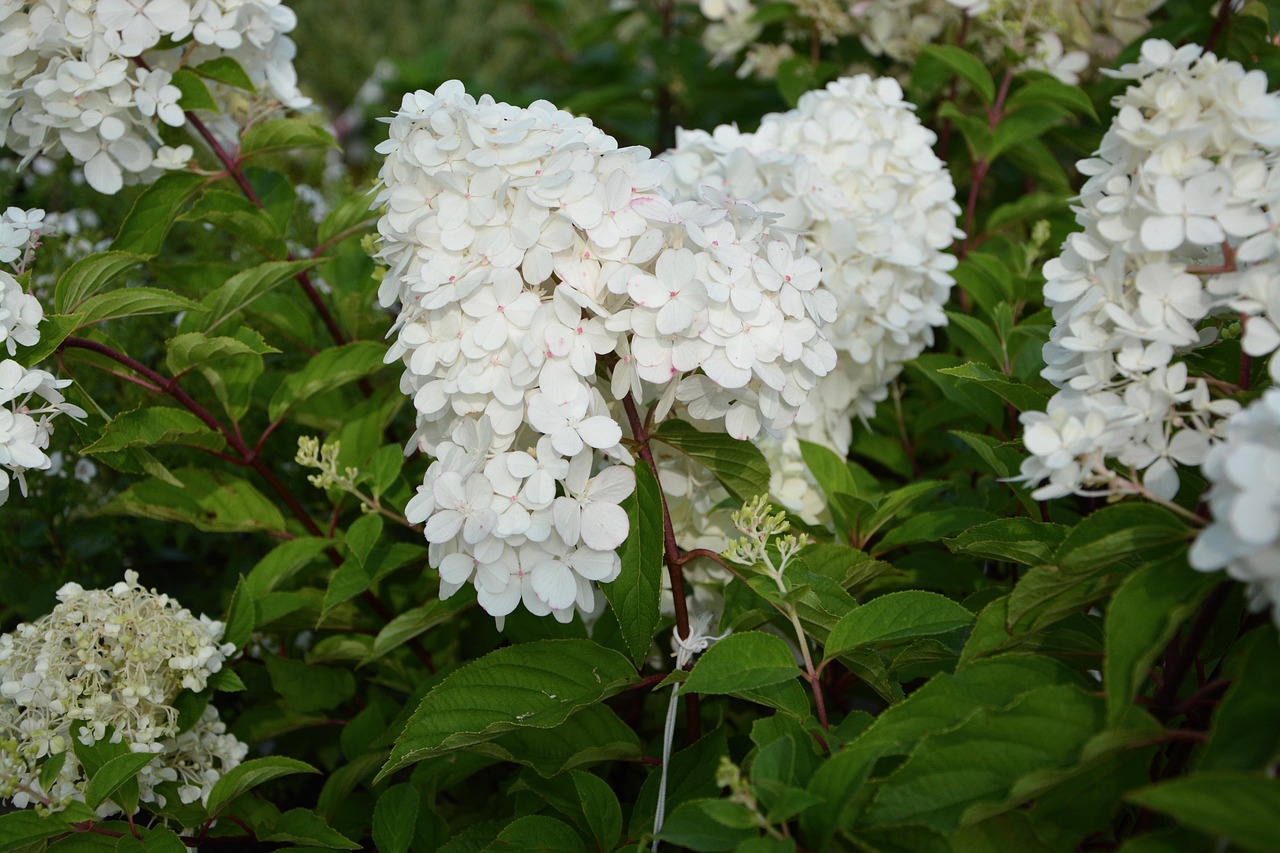Hibiscus syriacus | A Gentle Touch of Color in the Summer Alleys
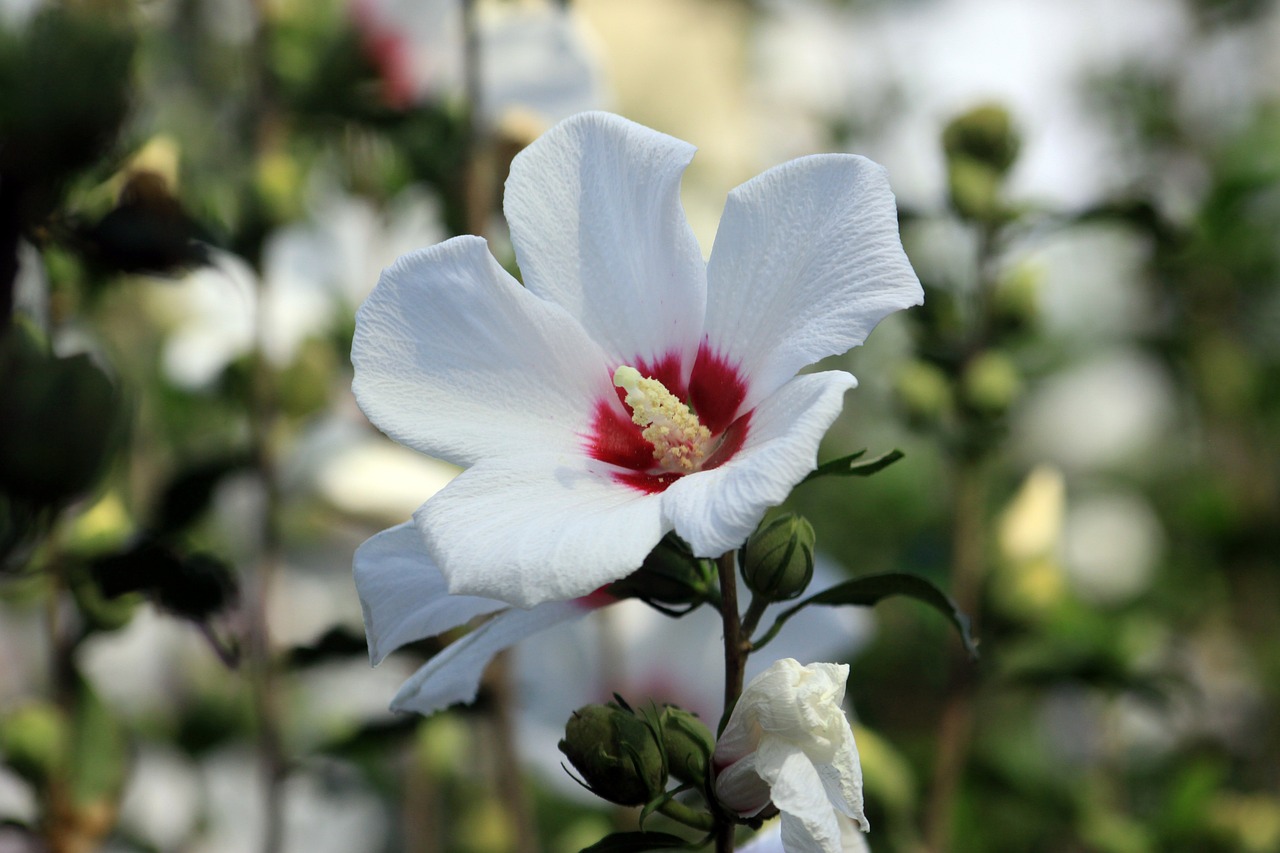
The Hibiscus syriacus, known as “Rose of Sharon,” is a vibrant and resilient flower that blooms from summer to autumn.
It has long been cherished in Japan and Korea, where it is also a popular garden tree. With its beautiful blossoms and high tolerance to heat, it is widely loved as a symbolic tree.
In this article, I will provide detailed information about Hibiscus syriacus, including its basic features, cultural background, and gardening tips.
Basic Information
- Scientific name: Hibiscus syriacus
- Family: Malvaceae
- Origin: China
- Appearance: The flowers measure about 10 cm in diameter and come in a wide range of colors, including white, pink, purple, and blue. Both single and double-flowered varieties are abundant. As a shrub, it grows to about 2–3 meters in height. Its dark green, glossy leaves create a refreshing impression in gardens.
- Blooming season: It continuously flowers from July to October, allowing long-term enjoyment.
Cultural Significance Around the World
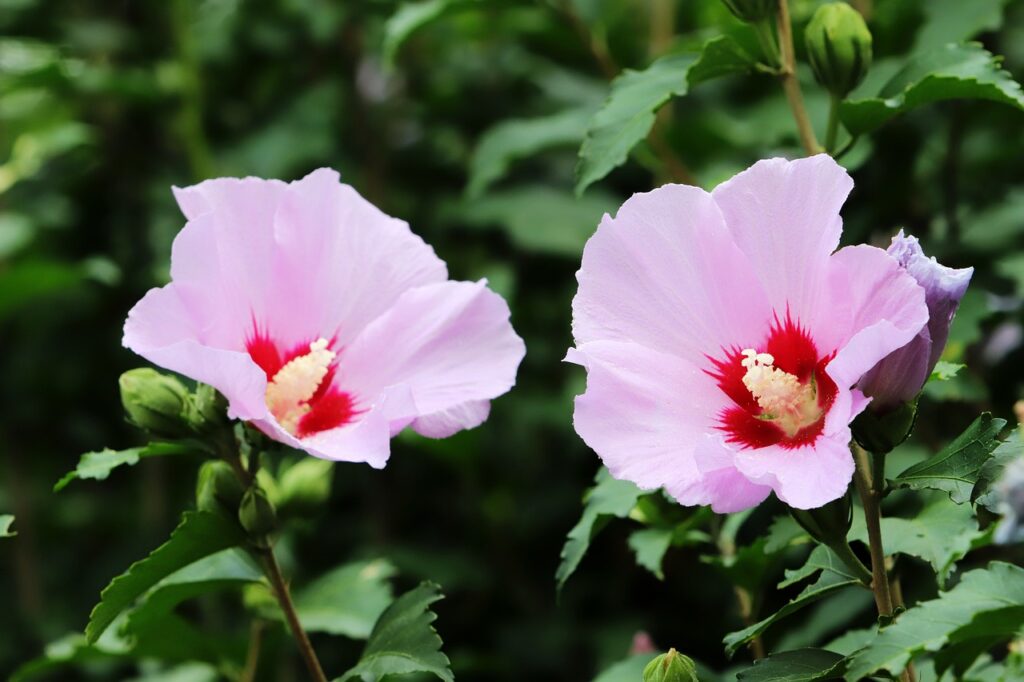
In Korea, Hibiscus syriacus is called Mugunghwa and is deeply revered as the national flower.
It symbolizes “eternity” and “an indomitable spirit,” often used as a symbol in education and politics. It is cherished by the people as a representation of strength in overcoming difficulties.
In Japan, it is widely appreciated as a representative summer flowering tree, often seen in gardens and parks as a seasonal delight.
In Western countries, it is known as the “Rose of Sharon” and is popular as an ornamental plant in gardens and planters.
Its flower language conveys “faith” and “delicate beauty,” and across regions, it is valued for both its beauty and resilience.
Historical Episodes
Hibiscus syriacus has been regarded as a sacred plant across Asia since ancient times.
In ancient China, it was called Fusō, symbolizing longevity and prosperity due to its strong vitality, and was frequently planted in the gardens of emperors and nobles.
It later spread to the Korean Peninsula and Japan. During Japan’s Edo period, various cultivars were developed, and the plant became popular as an ornamental garden tree.
The flower has also been loved as a subject in poetry and art. In classical Chinese literature, its vitality was praised, while in Korea, it was treasured in royal courts across dynasties.
Thus, Hibiscus syriacus has carried unique cultural meanings in different regions while remaining beloved throughout history.
Gardening Advice

Hibiscus syriacus prefers sunny locations but is strong enough to grow even in partial shade. With its tolerance for both heat and cold, it adapts well to the Japanese climate.
Water thoroughly when the surface soil becomes dry, paying special attention to avoid drought stress in summer.
Since growth becomes vigorous during the rainy season, regular pruning and trimming help maintain a beautiful shape.
It prefers well-drained soil. For potted cultivation, using pumice stones or mesh at the bottom of the pot ensures proper aeration.
Applying fertilizer about once a month during the growing season improves flowering.
Although it sheds its leaves in winter, new shoots emerge the following year. By cutting back moderately, you can enjoy a well-shaped plant.
Conclusion
Hibiscus syriacus is a highly popular garden tree, admired for its strength against summer heat and its long flowering season.
It holds symbolic significance across Asia and continues to bring joy with its beautiful blossoms in gardens and parks.
I encourage you to welcome Hibiscus syriacus into your garden and enjoy its seasonal changes and beauty throughout the year.

